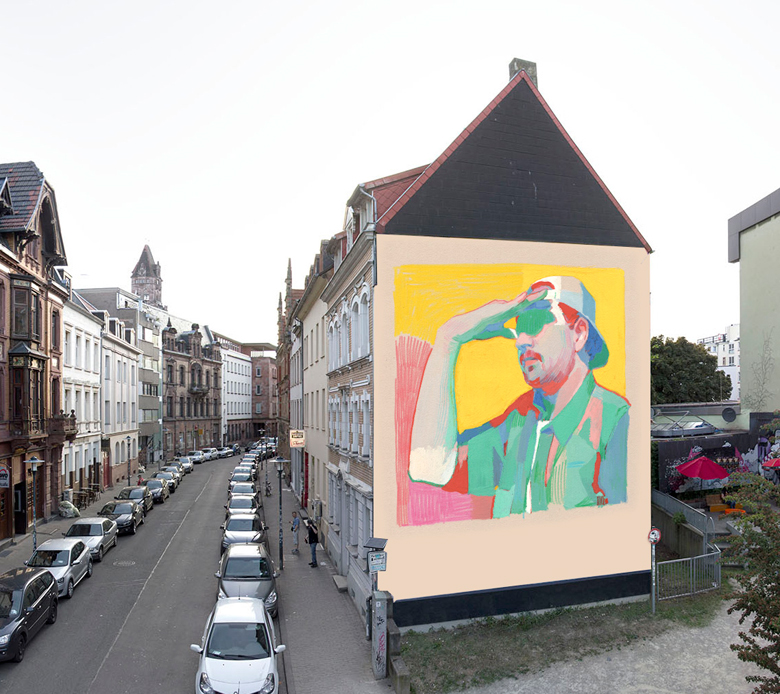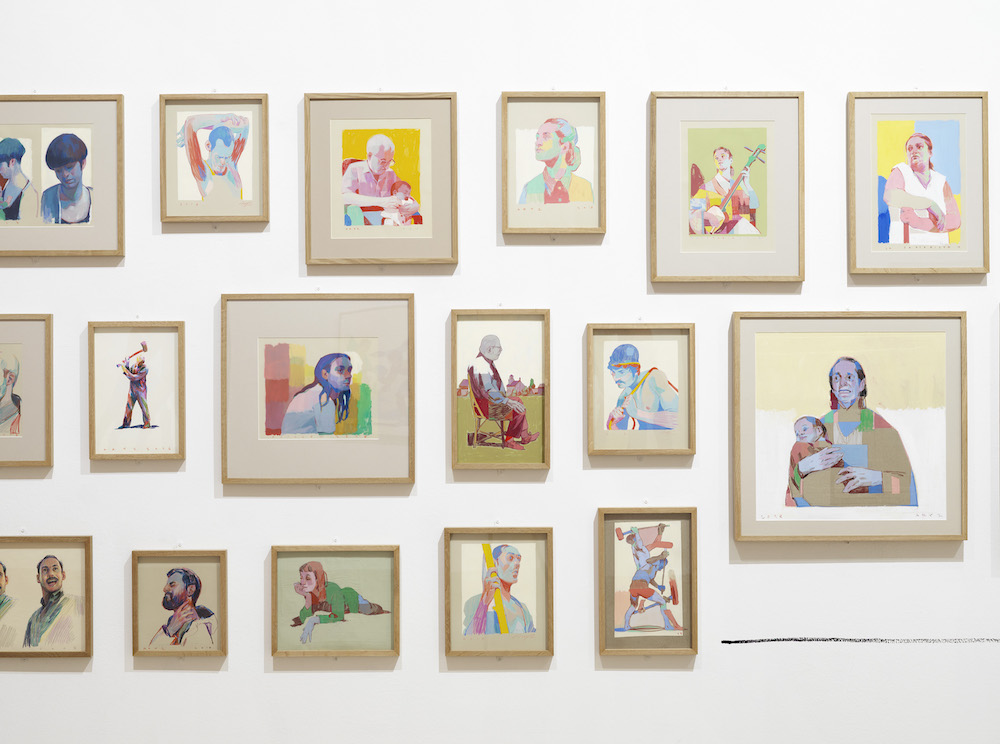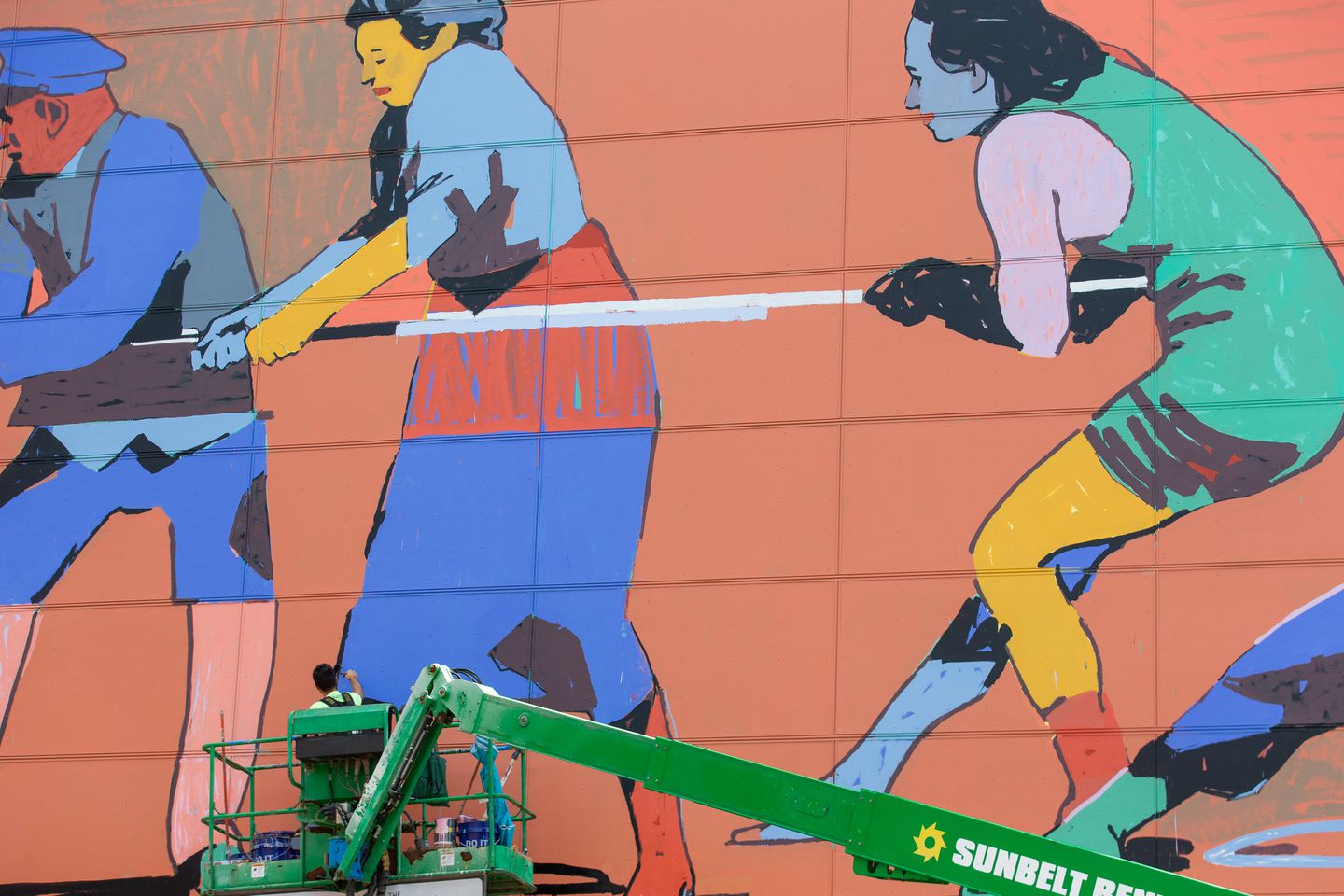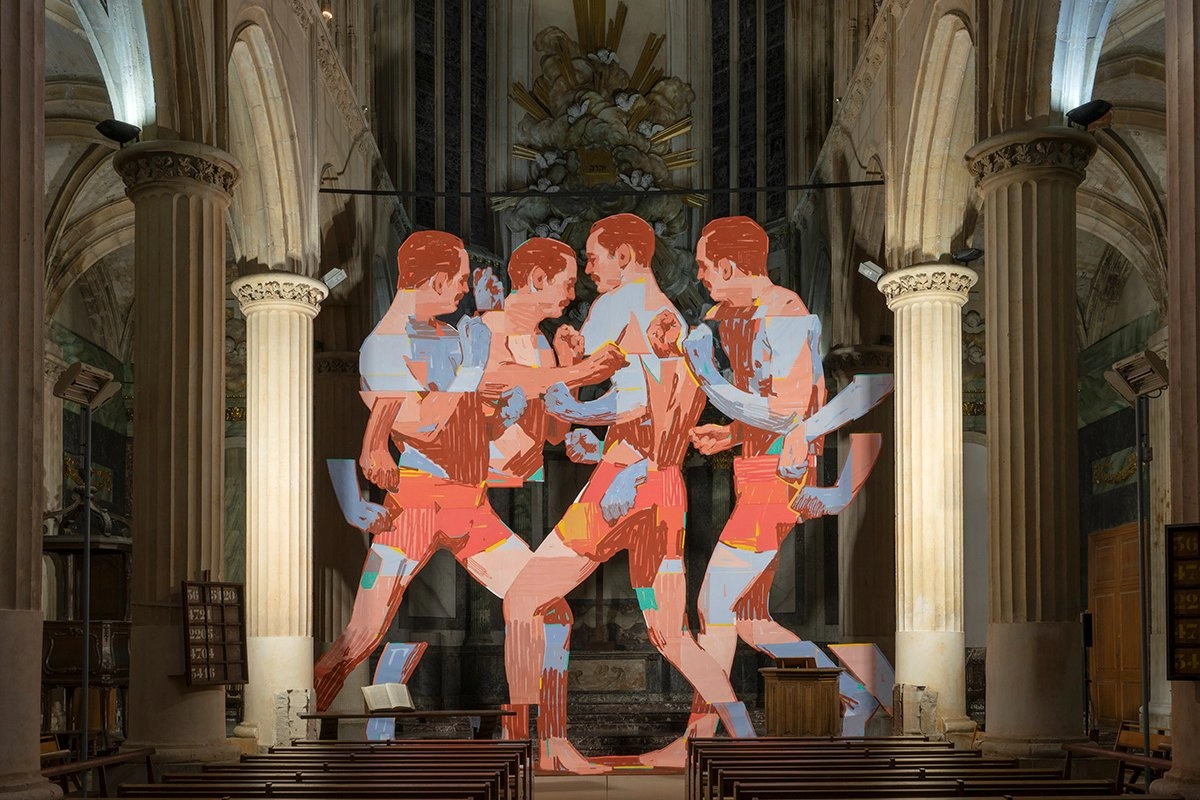Octavi Arrizabalaga is a Spanish muralist, but also a painter, illustrator, and author of immense interior installations. He's known as Aryz, and the street art world now considers him the frontman of its development. That is no surprise; his hundred-meter murals quite literally grab people on the streets by their hands and quickly take them out of their everyday stereotypes.
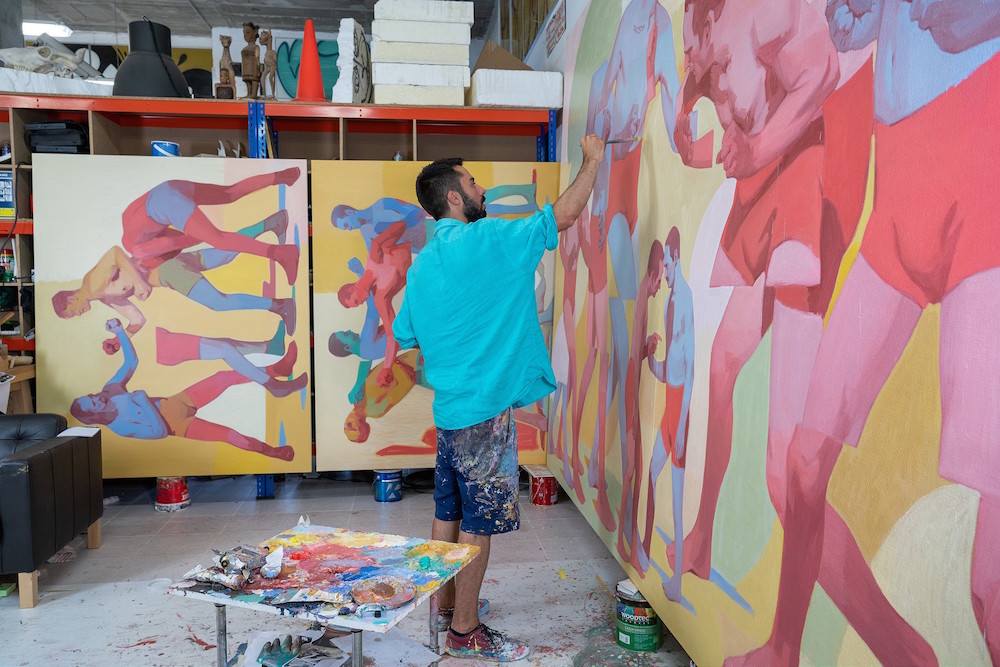
You can't confuse Aryz's work with anybody else’s. It will amaze you with its large segments in pastel colors, communicating with one another in harmony like in a melodic sonata. His figures are astonishing, bold, and full of life. They're often in motion, but sometimes they just sit there and think. Aryz is best known for its larger-than-life murals; his work has its roots in graffiti. However, that isn't so apparent in his present work. Except for street murals and interior installations, his work has recently been exhibited in contemporary art galleries, too.
Fascination with movement
Aryz's characters often dance, fight, compete, their chests heave in sports jerseys; they might tame lions, but also gracefully dance or playfully wrestle. They often come from the theater or sports world and are forced to interact with the environment they're set in.
"I’ve been obsessed with translating movement to a static image. So during these last few years, when I create an image, if I want to be more dynamic, I add a part of what it would be called, in animation, a key frame (a relevant part of a movement). So I try to have a couple of them in the same image. If I’m painting a dancer, I try to keep some of the hand or leg movements, having in consequence three or four arms and legs. That way, you can imagine what was happening in the sequence."

His fascination with movement can be seen, for example, in a large mural in Berlin, in which he portrayed wrestling men. By deconstructing an individual movement, the artist allows for the dynamics and intensity of the theme. "It's all about painting these humans that are fighting against humans as a reflection of the nowadays society,” Aryz tells Colossal.
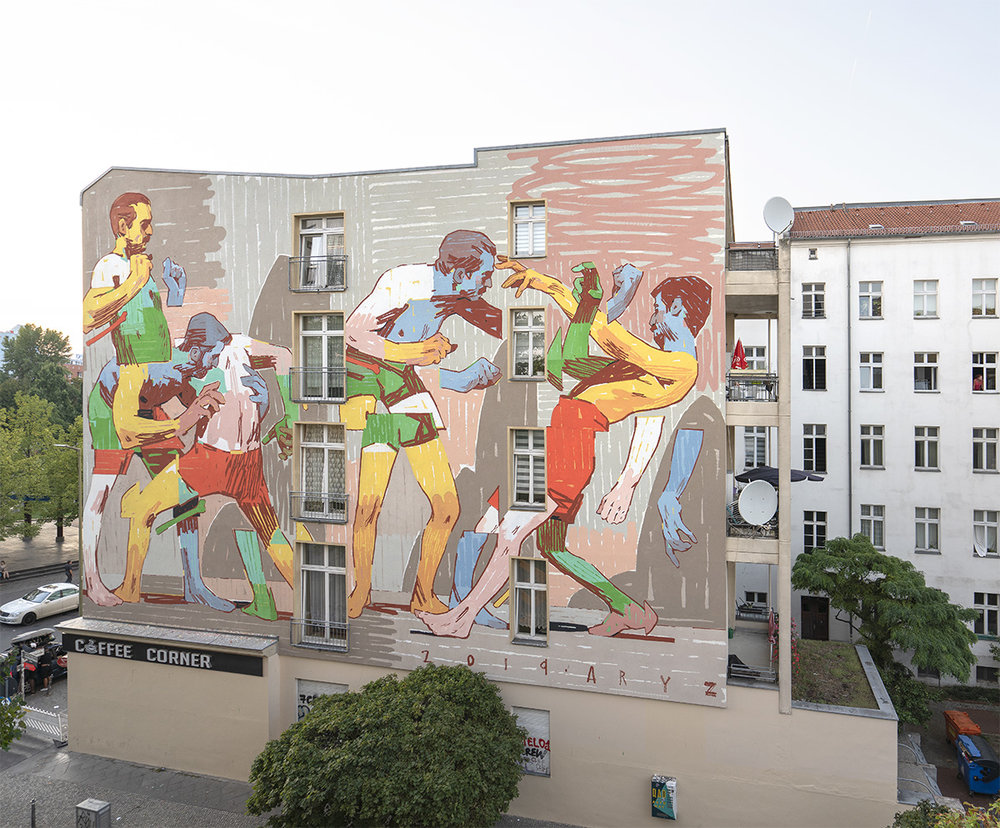
How does he do it?
This artist's style is unique. He went down in history of the street-art scene with his large-format paintings of various animals, skeletons, or monsters at the very beginning of his work. Only later did he begin to portray male or female humans. Sketched figures taking up soft pastel tones overlap in various ways and show fragments of their bodies to anticipate the expected movement. "Before starting the mural, it feels like I’m preparing for a match. It’s like a fight that takes several days. During the mural process I will be totally immersed in it, so I try to be a bit prepared mentally and physically."
As he himself says, he's continuously refining his work. He uses his rough sketches characteristically as the final plan for canvases and large-format murals as well. He works with both spray and paint, mimicking rough brush strokes with paint rollers. We can watch fascinating footage capturing his work, in which we witness the eye-satisfying mixing of individual paints resulting in a new color tone, which he then confidently transfers to the walls in raw strokes.

Artists working on large-scale pieces often use a projector to see their work on the wall and to not lose track of the correct composition. But for Aryz, the scale is clearly not an issue, and for his large projects he relies only on the sketch saved in his phone or on paper. "That makes the final piece have more strength on the strokes and keep the flavor that an original drawing would have." He further adds regarding his work: „When the piece is bigger, the interaction is not with humans anymore, but with architecture and the space that surrounds the work. I have the feeling that I have more freedom on a bigger scale. I don't have to be as careful as I should be when I'm working on a small painting. There is more margin for mistakes, for errors. “
His work is not limited to wall paintings, though; Aryz also works on studio work and screen printing. As an illustrator, he shows a great sense of detail. He says he finds inspiration in everything around him, for the better or the worse.
.png)
From the outside to inside and back
In 2019, Aryz got a chance to participate in a French project called Pugna, thanks to which he had the opportunity to create a monumental work in a rather unusual place – a church. In the Temple of Saint-Éloi in Rouen, France, a several-meter installation of four identical men full of determination to fight came to life. The piece was placed right in front of the altar at the end of the central nave. Visitors coming to the exhibition were confronted with the dialogue of the new and the old, the profane and the sacred, with timeless yet contemporary art which contrasted with the architecture of the 16th century. As the painter himself points out: „I'd never think I'd be able to create a piece of art inside a church, even if just temporarily, without getting arrested for it.“
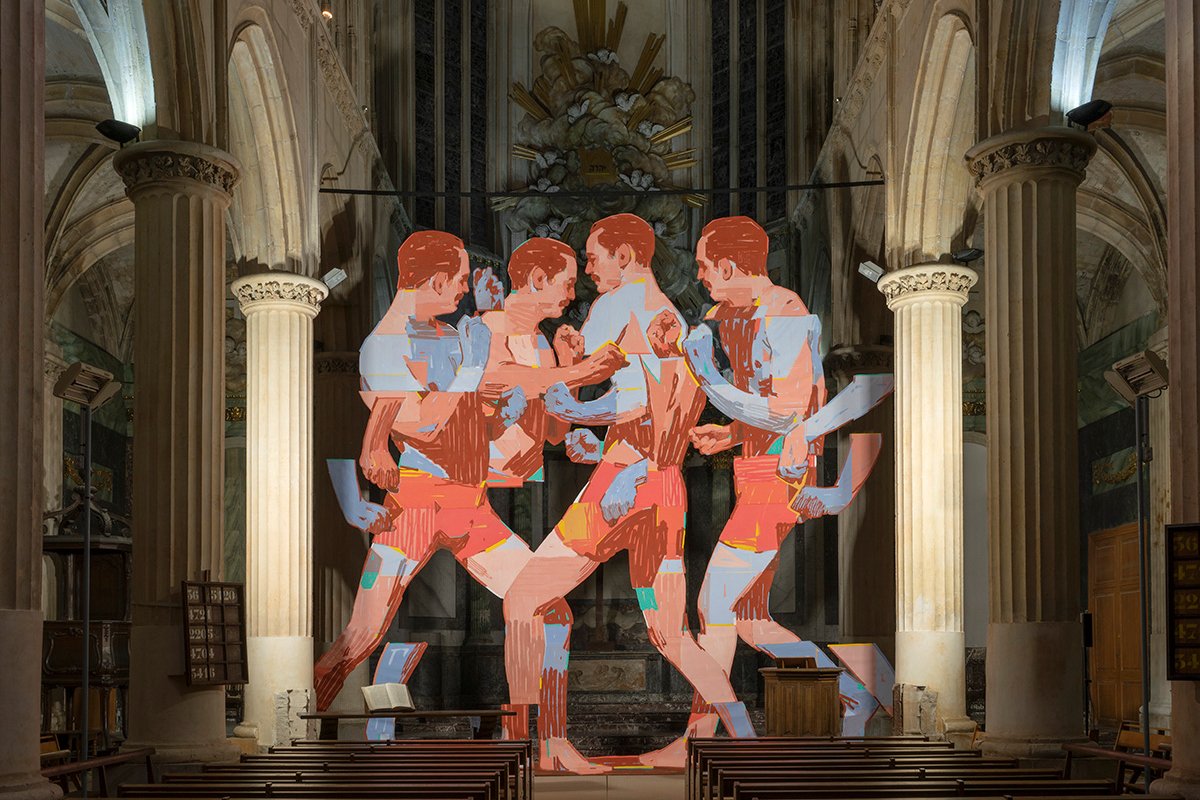
This February, Aryz made a church comeback with all his grandiosity. MAGMA Gallery in Italy arranged for Aryz's first solo exhibition El Festejo (which translates as The Celebration). They installed his gigantic lithographs, female figures captured in the middle of a dance or a game, in the niches of the former Ex Chiesa di San Mattia church. Visitors could thus watch dynamic dance variations of around 10 meters in size. He also created three murals as part of the exhibition in the heart of the city of Bologna.
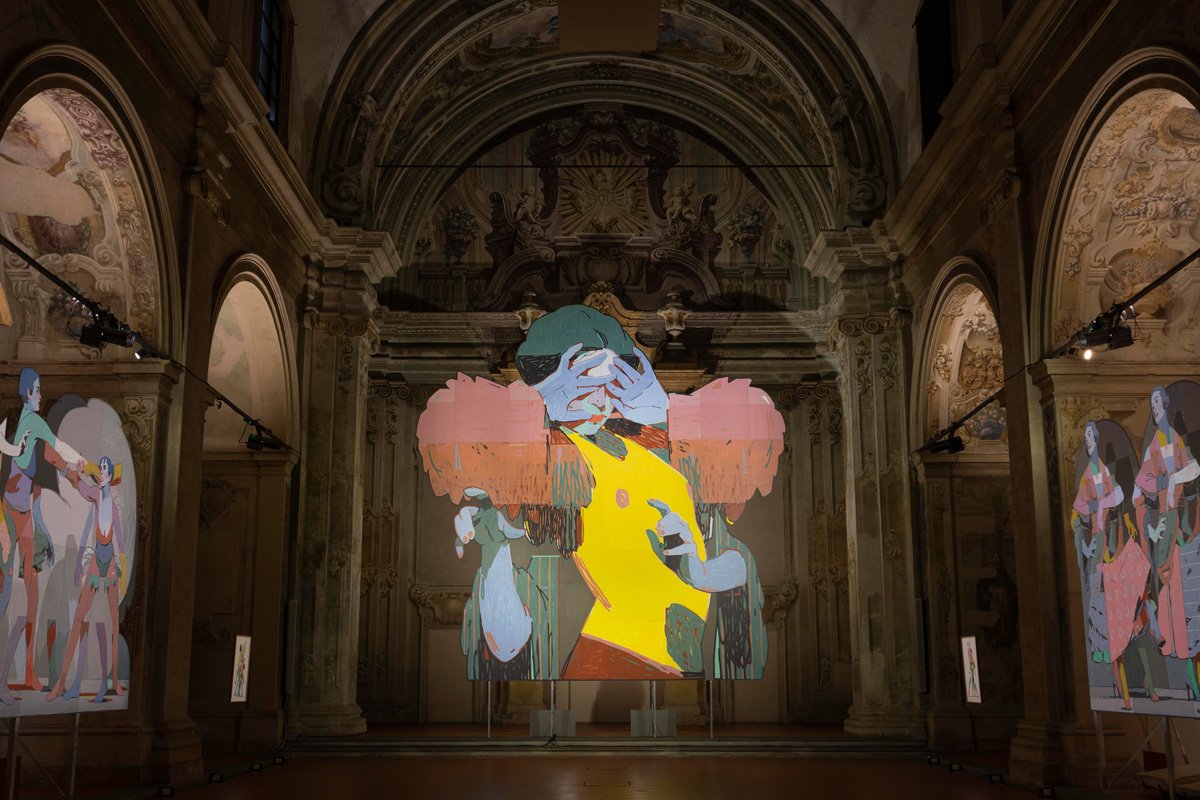
.jpg)
Aryz was born in 1988 in Palo Alto, California. When he was three, he moved with his parents to Barcelona and later to Cardedeo, where he lives today. He soon showed interest in the graffiti scene and he joined the local crew as a teenager. What Aryz likes best is to create large-scale murals, thanks to which he quickly secured a place among the best muralists. His distinctive style is known primarily for its loose lines and muted colors. He painted in many parts of Europe and other places around the world such as the USA, Venezuela, Japan, China, and Morocco.
